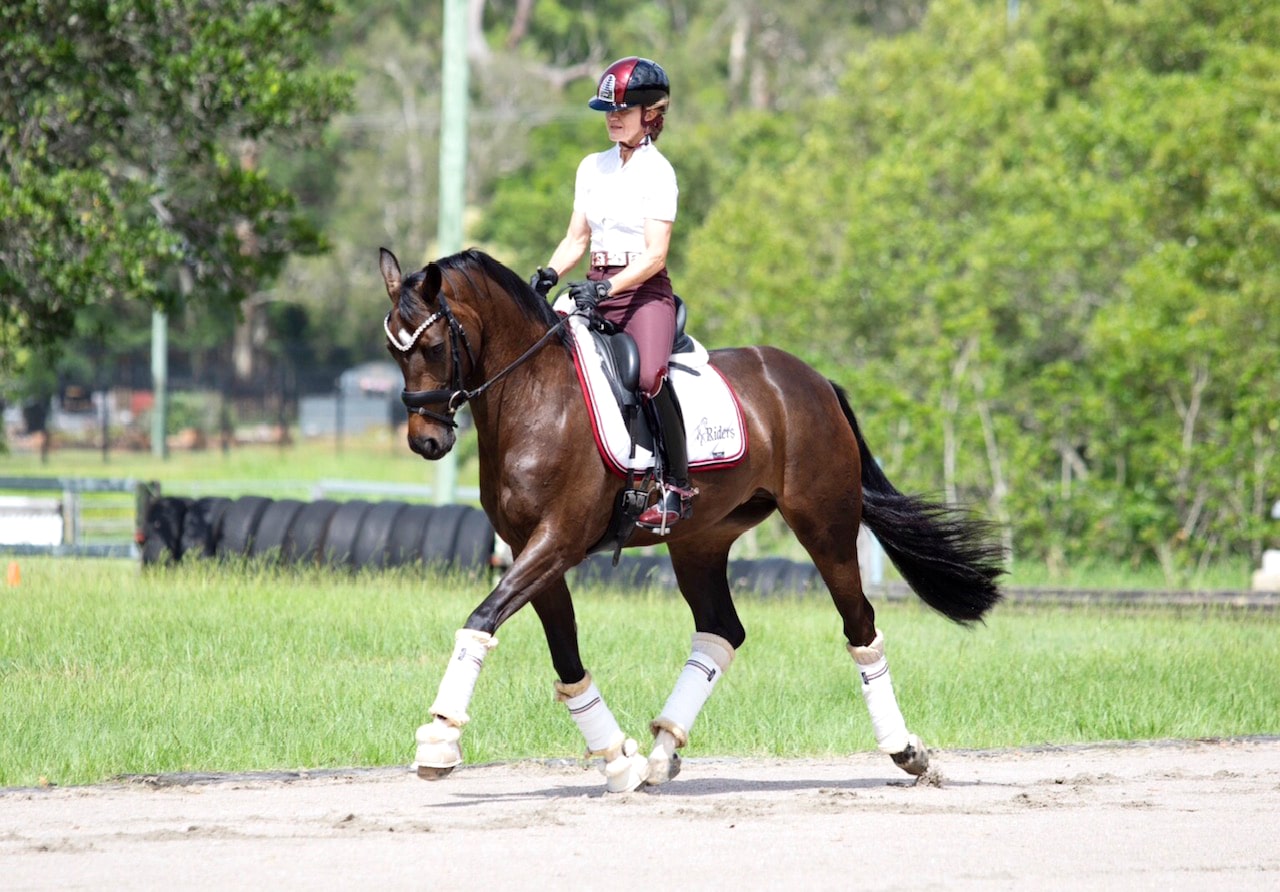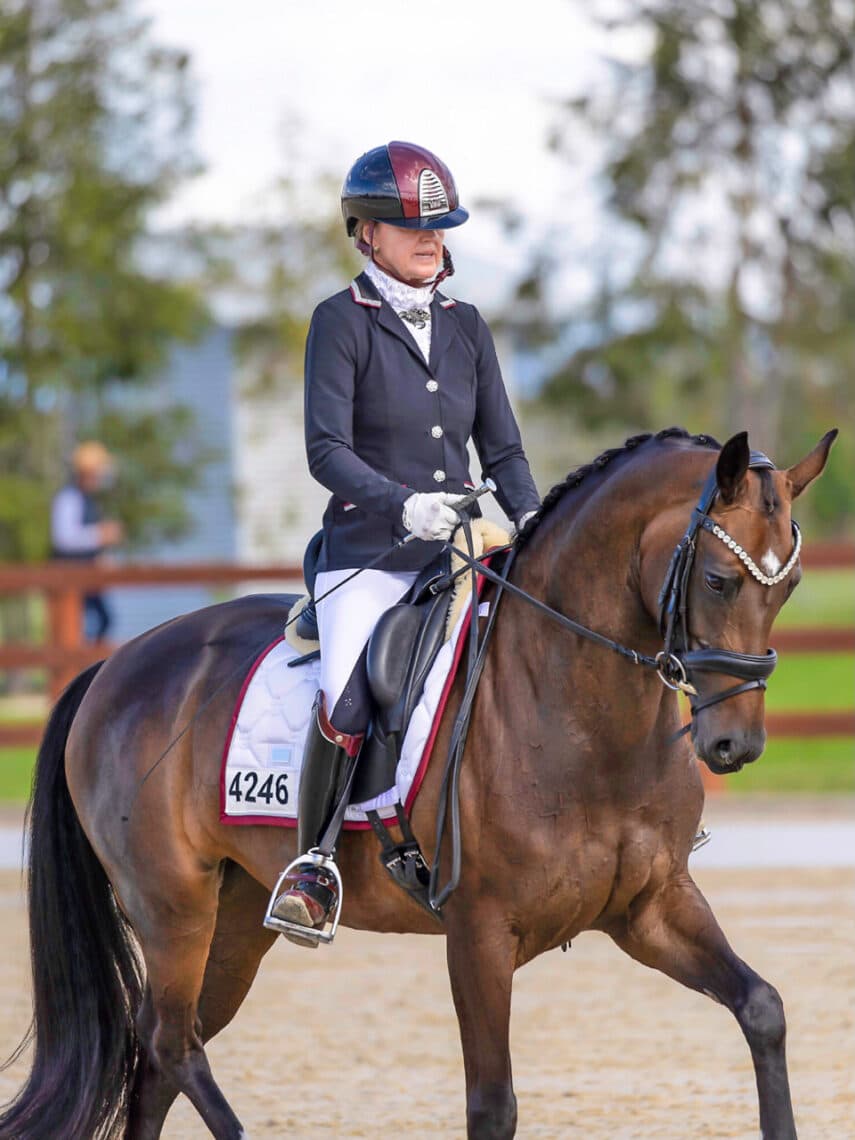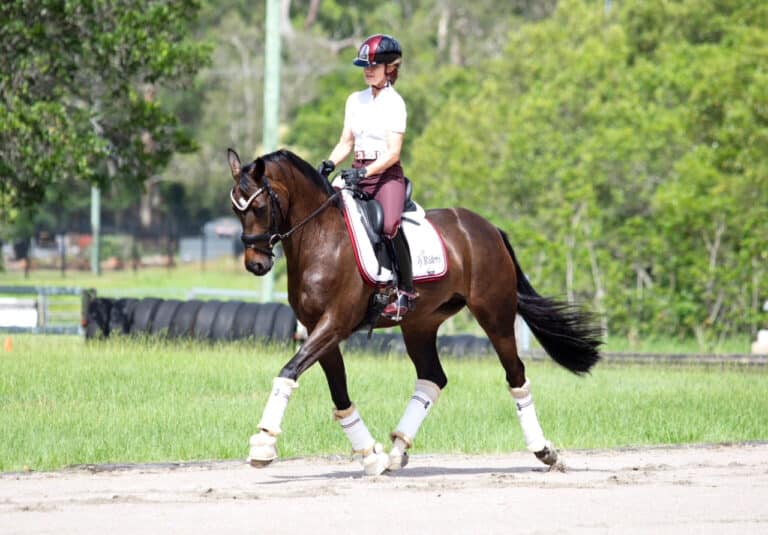
The importance of transitions
It’s all too easy to become complacent about transitions. But they are a training opportunity that should never be ignored. NICOLE TOUGH explains why.
Transitions refer to both changes of pace and variations within the pace. Transitions from one pace to another should be precise, clear and be performed as the rider’s leg passes the prescribed marker. When they occur within the pace – increasing and decreasing the size of the steps – transitions play an essential part in the horse’s overall training.
All transitions have an important function. Whereas humans use gym machines to build specific muscles, the dressage trainer uses transitions to build the pushing and carrying muscles needed to develop an FEI horse. The repeated practise of pushing and carrying, through good transitions, develops the impulsion that can transform a nice horse into an extraordinary one.
For every transition from one gait to another, there is a beginning, a middle and an end. Through all three phases, the rhythm and balance should be maintained up to the moment when the pace is changed, and the horse should remain light in the hand, calm, straight, and in the same position.

We should never begin a transition if the horse is unclear in the rhythm, has contact issues, is unbalanced, crooked, strung out and so on, because the transition cannot recover. A crooked horse will make a crooked transition; a horse that is against the hand will come more against the hand in the transition. The rider should correct their beginning point before attempting the transition. If we start well, and a mistake is made in the middle or at the end of the transition, we should do it again and again until it’s as good as we can get it.
This is training – and when training corrections, think repetition, not punishment. Horses learn through repetition and every transition we accept teaches the horse what is acceptable. Always remember, to accept is to approve. So don’t accept in training what you wouldn’t like in competition. Horses get good at what is practised, so ride 200 transitions every training session, think about them from the judges’ perspective, and give yourself a mark for every single one of them, re-doing any that go awry.
Transitions within the pace are an excellent way to channel energy and improve collection. When we decrease the size of the steps, we are asking the horse to take more weight to the haunches (carry), and when we increase the size of the steps, we are training the thrust (push). If we can’t shorten the steps, it is hard to train them, and if we can’t lengthen the steps, it is hard to reward them. We should play a game with our horses: how small can they step and after a few steps, ride bigger steps and reward their effort. Repeat this game until they are anticipating the ‘go’. Every good downward transition trains the horse’s carrying muscles, so that one day they have the strength to do canter pirouettes and piaffe; and every good upward transition trains the horse’s pushing muscles, so one day they have the strength to do extensions and passage.
Downward transitions should be performed with a subtle combination of all the aids: seat aid to execute, leg aids to maintain an active hindleg, and rein aids to manage (not support) the frame through the transition. Likewise, upward transitions are also correctly performed with a subtle blend of the three natural aids: lower leg to execute, seat aids to maintain balance on the hindleg, and the rein aids to manage (not support) the frame.
Left to themselves, all horses will use transitions to become long; simultaneously becoming inactive behind, losing balance to the forehand, and looking for support from the rider by leaning on the hand. It is up to the rider to use transitions to their advantage. Every ride, use the transitions to find out how little we need the rein. FEI Judge General Stephen Clarke once said that the more we use our seat and leg, the less we need the rein. Performed correctly the horse will stay soft and supple in the back through all transitions.
Training in the right direction means using transitions as tools for developing the pushing and carrying capacities of the horse. As previously mentioned, this pushing and carrying ability is called impulsion. Every horse can walk, trot and canter; but it is impulsion, with its improved elasticity and spring in the joints, that is the added ingredient which makes the gaits more spectacular.
It is easy to become complacent about the transitions, thinking that near enough is good enough. But practising poor transitions ingrains incorrect mechanics and confirms habits which only hinder our horse’s development. When we train, we should think about the future and what we are trying to produce. A horse in self-carriage and consolidated in their strength to remain on the hindleg, will always be a happy athlete.



